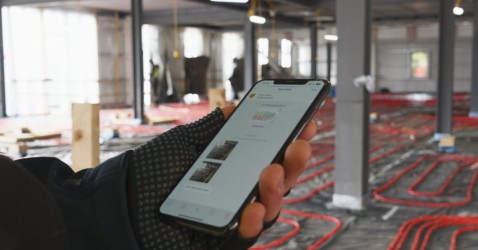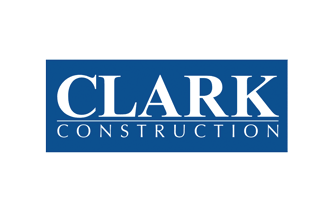Construction labor trends: How to navigate the changing workforce with effective project management

The construction industry has some significant changes ahead of it. Stories of volatile material costs and skyrocketing demand populate headlines, but the changing workforce also demands consideration. The state of labor in the sector is shifting, and construction project management must evolve alongside it.
Summary
The construction labor shortage is reshaping the industry, with demand for nearly half a million additional workers in 2025 and 2026. Generational skill gaps, safety concerns, and burnout add further challenges. Smarter project management strategies — including digital tools, prefabrication, and improved communication — can help contractors adapt, boost productivity, and maintain project momentum despite workforce pressures.
Takeaways:
- The industry faces a shortfall of 439,000 workers in 2025 and 499,000 in 2026.
- Older workers often lack digital skills, while younger hires may lack field experience.
- Safety, mental health, and sustainability are growing workforce priorities.
- Software, prefabrication, and ongoing optimization help teams adapt to labor challenges.
- Adopt modern project management practices to strengthen resilience and efficiency in the face of workforce shifts.
Understanding construction’s changing workforce
Any search of recent U.S. construction industry statistics will likely entail some mention of the ongoing labor shortage. Despite more young people entering skilled trades than in previous years, the building sector will need an estimated 439,000 additional workers to meet demand in 2025 and another 499,000 in 2026. Failure to do so could lead to frequent delays and increased stress on existing subcontractors.
The construction labor shortage isn’t the only shift rippling throughout the workforce. Many industry veterans lack experience with the digital technologies contractors face mounting pressure to adopt. On the other side, newer subs have digital skills but less experience in the hands-on side of the job, and rushed project timelines leave little time for training.
Concerns around safety and sustainability are also more common among the newer, younger demographic entering the workforce. Frequent burnout, rising labor costs, persistent communication issues, and a growing desire for clarity and equity in the workplace may all pose new challenges, too.
How to navigate obstacles with better project management
The changing workforce may seem like an imposing obstacle, but contractors can adapt. Here are five ways to navigate these shifts through strategic construction project management.
1. Capitalize on construction management software
Digitalization — one of the latest trends in the construction industry — has gained prominence for a reason. Using the right project management software can help with virtually all aspects of today’s workforce challenges by streamlining workflows and maximizing visibility. These solutions can save as much as one hour per worker per day, and time is your most valuable resource.
Less time spent on daily tasks leaves more room for training, fights stress by reducing relative workloads and allows a smaller team to accomplish more work. Of course, not every software solution is created equal. You should look for options that feature:
- Task tracking
- Scheduling and timesheets
- Reporting
- Real-time communication
- Integrations with other software
2. Emphasize site safety
A thorough construction industry overview will also reveal how common injuries are in this sector. While it may seem like a separate issue initially, you should also address this to account for workforce changes. The construction labor shortage means you can’t afford any unplanned downtime from injuries, and a higher safety standard will help entice new hires.
Thorough training and stricter jobsite protocols are crucial here, but new technologies can help, too. Robotics may be most famous as a productivity tool, but it also decreases the risk of fatigue by separating subcontractors from the most dangerous parts of the job. 3D printing has similar benefits, and wearables can offer more insight into real-time safety concerns to prevent injuries.
3. Foster better communication
A changing workforce also demands better communication between contractors and subs. The growing number of new hires needs feedback to learn the ropes of the job, and more transparency can drive efficiency to offset labor gaps. Project management software is an ideal solution here, as it provides one source of truth for everyone involved and can support real-time messaging.
Fostering conversations about team members’ struggles is also crucial. Mental health concerns are prominent in construction, but people often don’t feel comfortable sharing their experiences. Studies show, though, that weekly meetings about employee well-being increase worker satisfaction by 16%, leading to less burnout, higher productivity and a healthier workforce.
4. Use prefabrication where possible
Construction and project management should shift to new operating models to account for workforce challenges. More specifically, prefabrication can mitigate labor shortages and skills gaps by reducing completion timelines and minimizing the amount of on-site work necessary. While this isn’t an option for every part of every project, its potential deserves attention.
Modular building methods can reduce construction time by 50% in some cases. It can also lower costs by up to 30% to compensate for higher labor expenses and improve on-site safety, mitigating concerns for would-be workers entering the industry.
5. Embrace ongoing improvements
Regardless of what other steps you take, you should also adopt a spirit of ongoing optimization in your construction project management. The changing workforce will continue to change in the future, and new technologies and macroeconomic environments will likewise shift. Consequently, remaining at the top of your potential means regularly asking where you can improve.
Stay on top of the latest trends in the construction industry, especially any emerging technologies or best practices that address new or growing challenges. Use data analytics to identify current growth opportunities and track your performance in key areas. Which changes make the biggest impact will vary, but the only way to capitalize on any is with regular review and adjustment.
Construction and project management must evolve
The construction labor shortage and related workforce shifts present both a challenge and an opportunity to industry leadership. Failing to adapt will make it hard to keep up with skyrocketing demand. However, you can drive success and make your projects more efficient than ever before if you take the chance to adjust your project management.




















